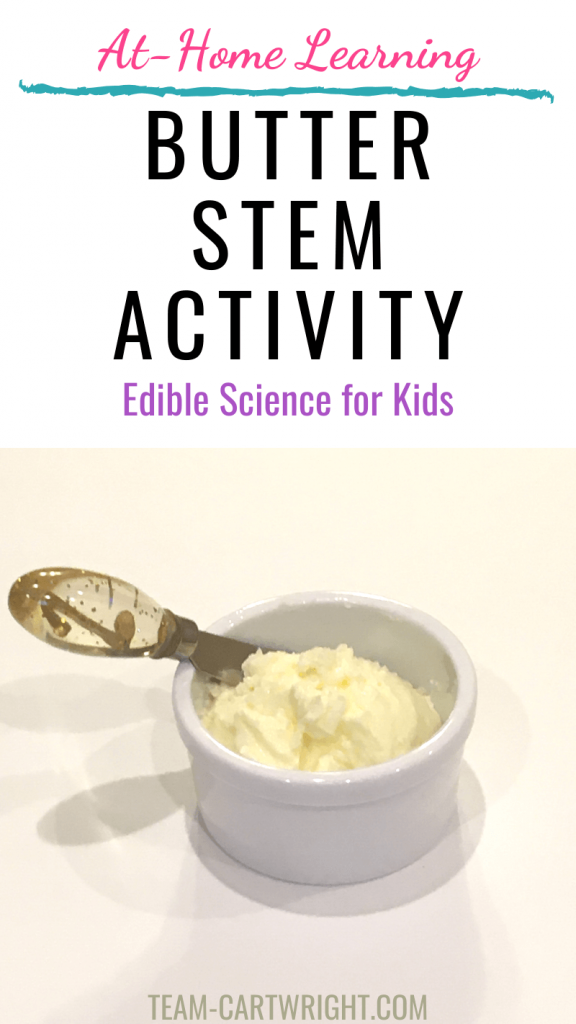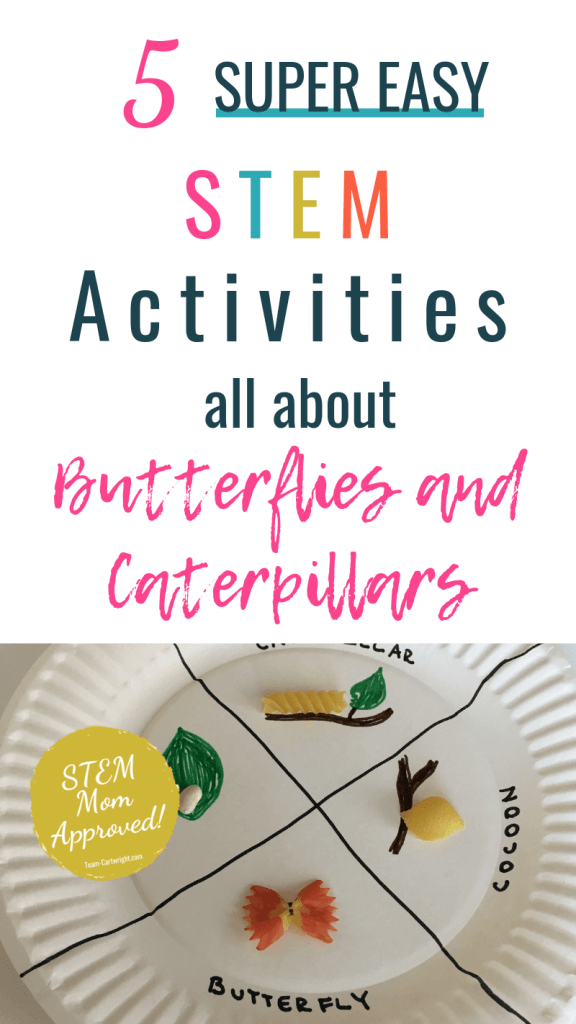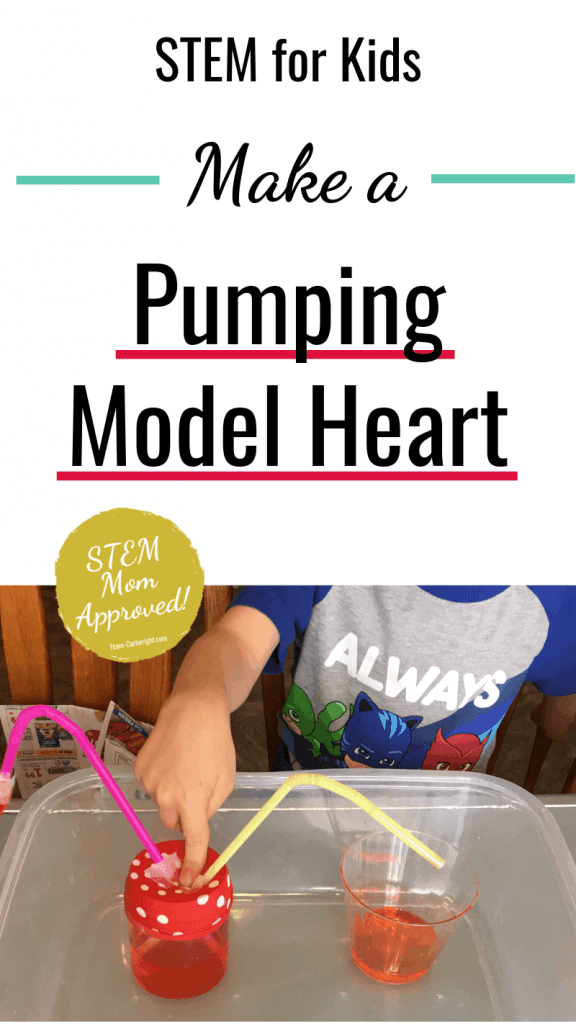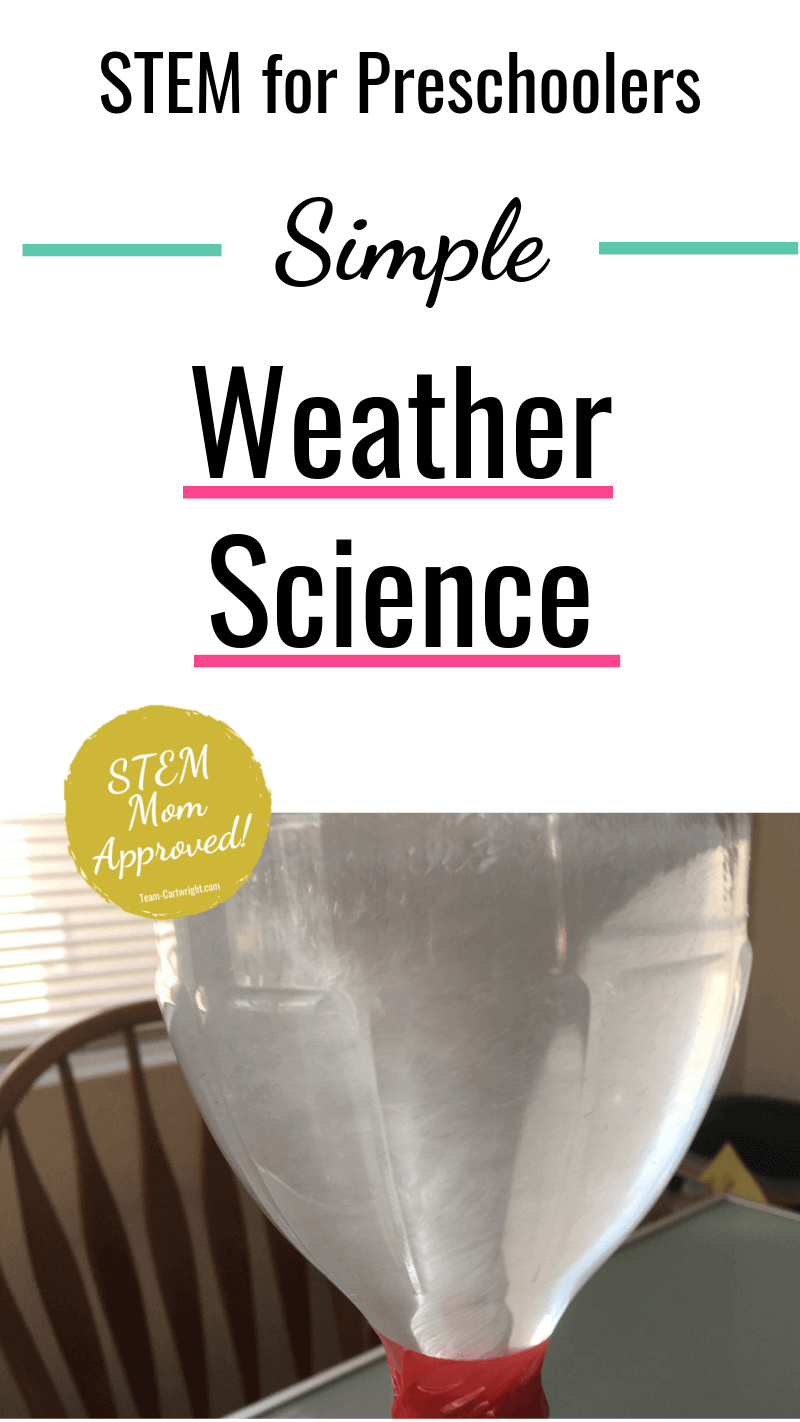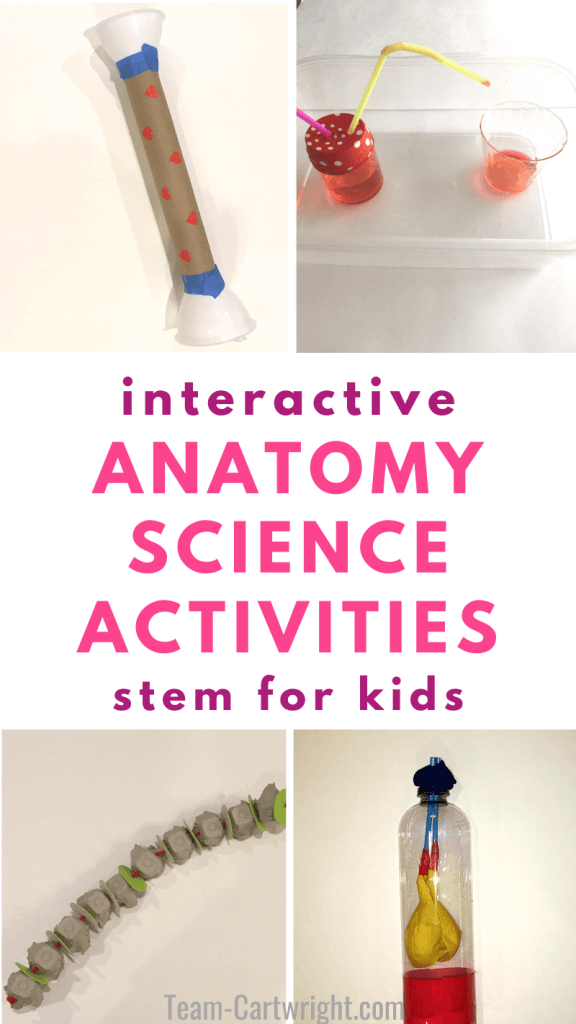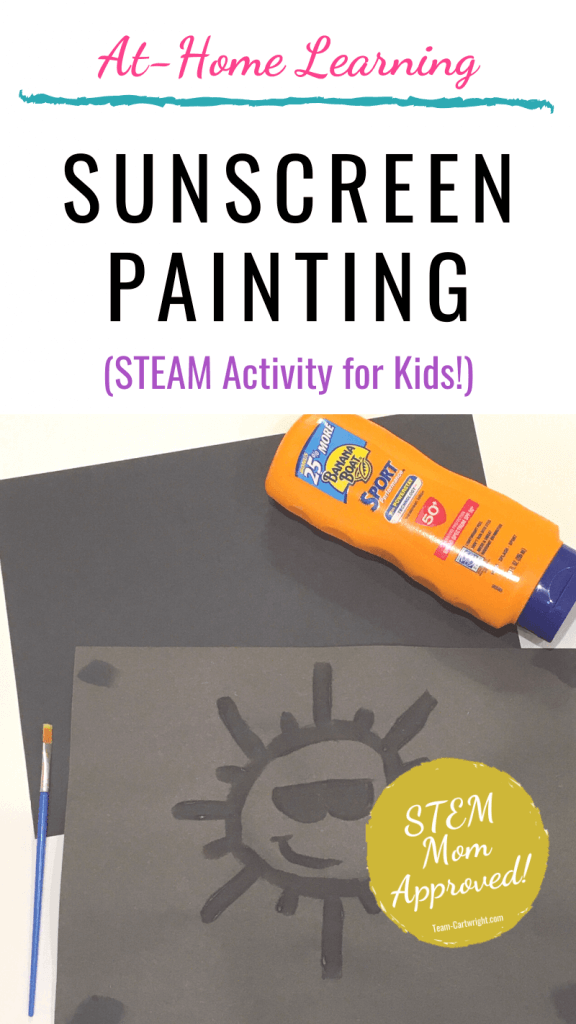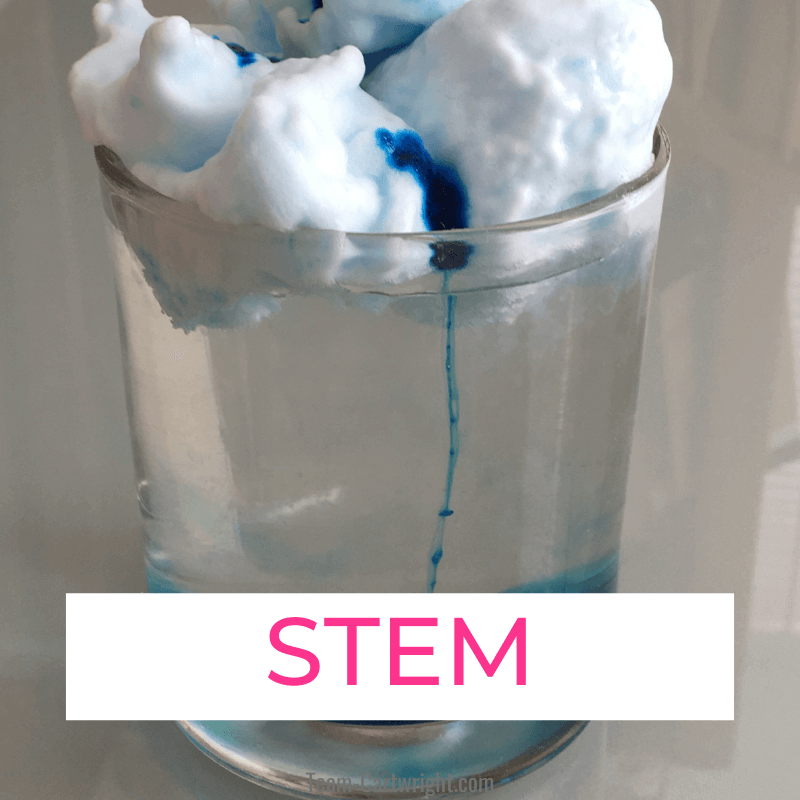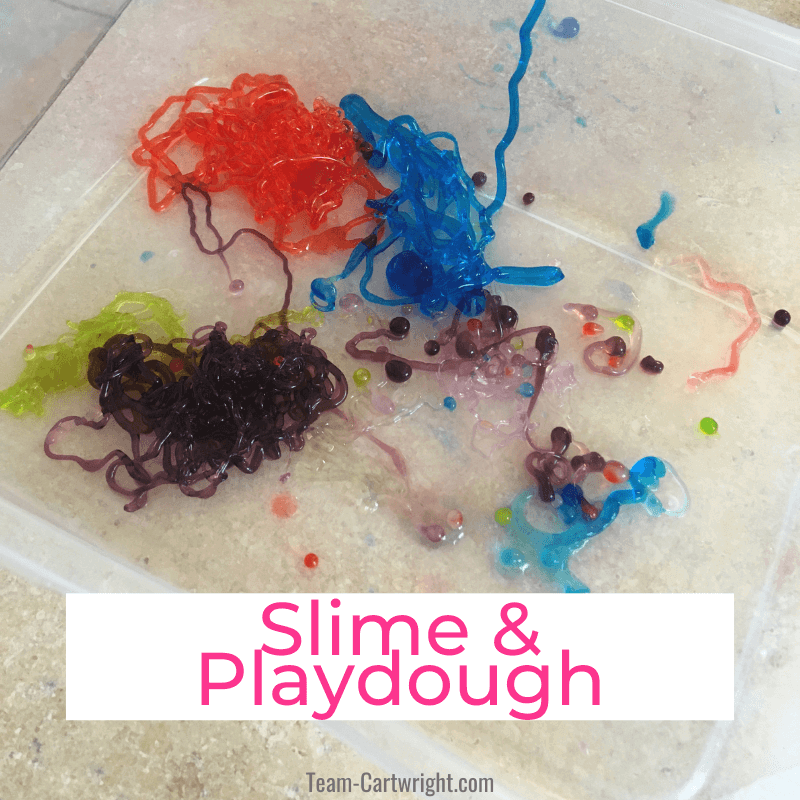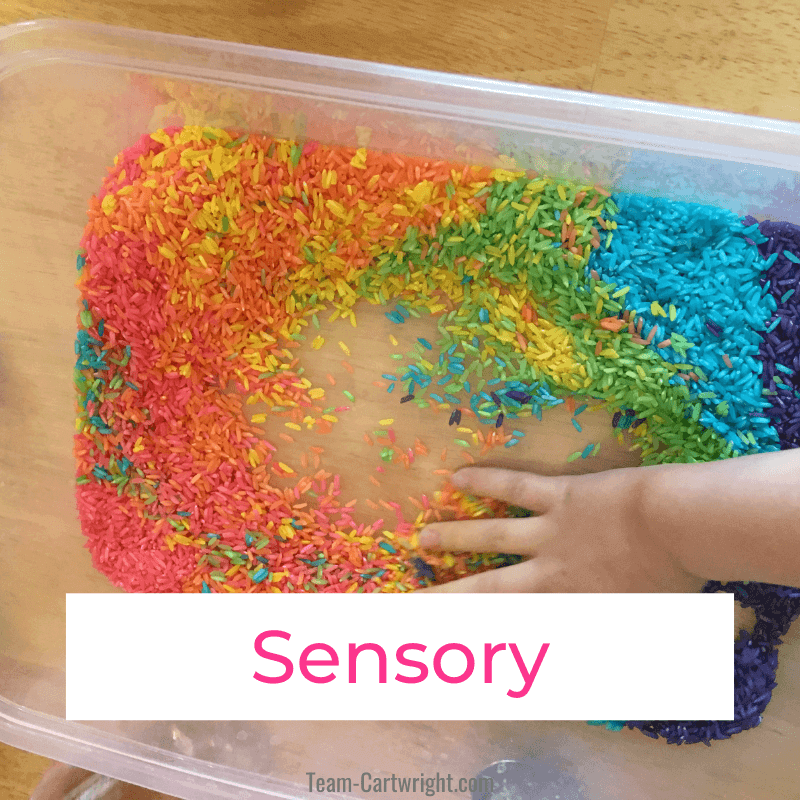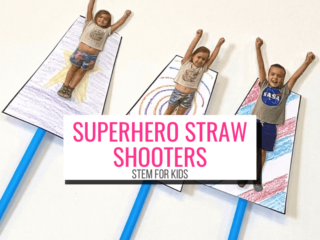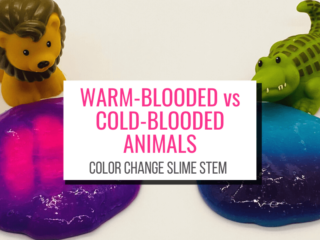Digestion Experiment for Kids: Easy Stomach Model
- Ages: Preschool, PreK, Kindergarten
- Difficulty: Easy
- Learning: STEM, Anatomy, Scientific Method
How does our body break down food?
This is a good question for kids. They know that they eat food and chances are they have heard a lot about how they need to eat healthy food to get energy.
Most likely they’ve heard that their stomachs play a role in how they get energy from food too. But how does it all work?
We don’t have to go into super deep detail at the preschool, kindergarten, or lower elementary level, but we can give an idea of how our stomach breaks down our food.
Here is a fun and super easy digestion experiment for kids.
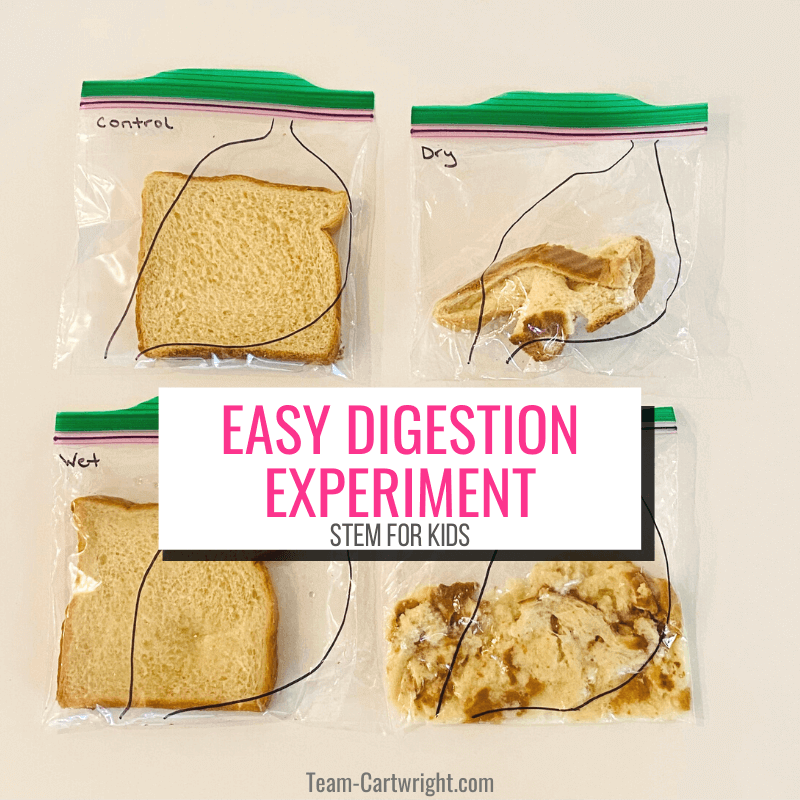
What's In This Post?
Digestion Experiment for Kids
This digestion experiment is a great way to talk through how to run a basic science experiment with your kids. There is a clear experimental setup, control group, and variable groups. Plus this experiment can be done pretty quickly, which is perfect for young children.
Supplies for Your Stomach Model Digestion Experiment
Don’t worry, this is so simple because everything you need for it can be found in your kitchen. It’s easy to decide to do this one last minute, which is helpful with littles.
Here is what you are going to need.
- 4 Resealable Baggies
- 4 Slices of Bread
- Water
- Marker
Yep, that’s all it takes to do this fun project. And you can make substitutions. Try crackers, cereal, even chips if you don’t have bread to use. Just something carby and crushable.
How To Set Up Your Digestion Experiment
Running Your Digestion Experiment
Time to set up our experiment. As we get started there are a couple of vocabulary words to make sure we know.
Control: The control group in an experiment is the group that you don’t do anything special to. You set it up like the rest of the experiment, but then just leave it. No big changes at all.
The control group helps us see if what we are doing in the experiment is actually having an impact.
Variable: The variables are what we are changing. In a scientific experiment, you want to change only one thing at a time, if possible. This way we know the effect comes from the change we made, not from other reasons.
Short version? Control is where you run the experiment without changing anything. Variables are what you do change.
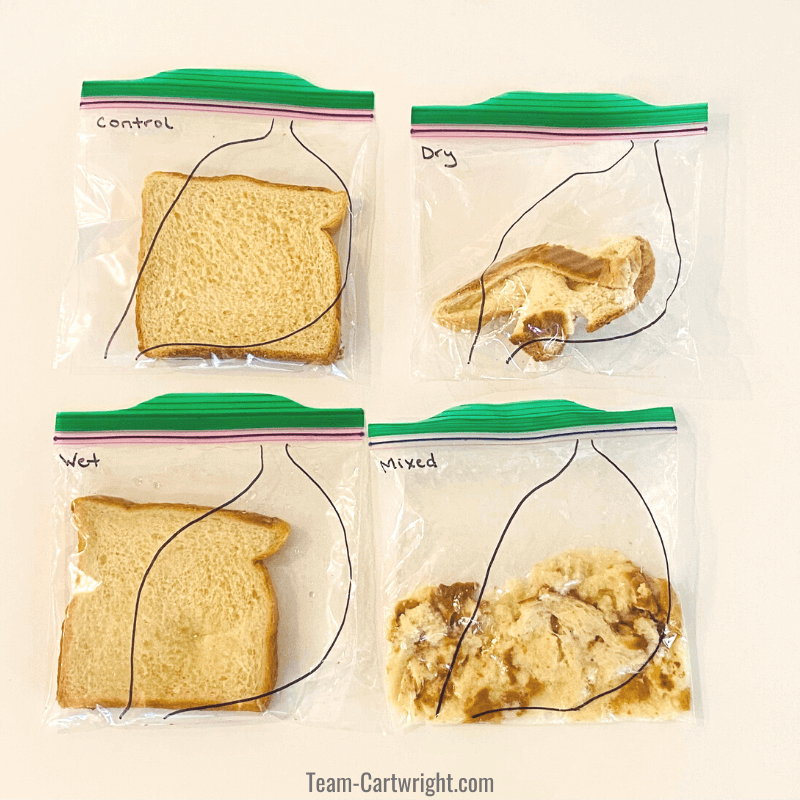
Experimental Set-Up
Step 1: Label your 4 bags as follows: Control, Dry, Wet, Mixed. We also drew a stomach outline on the bag for fun, it’s an optional step.
Step 2: Put a piece of bread into each bag.
Running Your Stomach Experiment
Step 1: Take the control bag and set it aside. Don’t do anything to this bag.
Step 2: Take the dry bag and have your child squish it up with the bread inside. Once they have squished it for a few minutes, set it aside.
Step 3: Take the wet bag and add 1/4 cup of water. Gently move the bag around so more of the bread comes in contact with the water. Set this bag aside.
Step 4: Take the mixed bag and add 1/4 cup of water. Seal the bag and have your child squish the bread with the water in the bag too.
You will love these activities too!
Observation and Data Analysis
Now that we have performed our experiment, it’s time to look at our data!
For this experiment we are just using our visual observations as our data.
Take a look at all your ‘stomachs.’ Which bread looks like it is the most digested? Compare the bags to each other and to the control bag.
Ask your child what they see. Does the bread stay in one piece? Does it look broken down or intact? Which bag is the most broken down?
Encourage your child to feel the bags further. How does the bread feel in each bag? Is one squishier and more broken down than the others?
Results
What you will most likely see is that the bread in the mixed bag, the bread that was wet and squished, is the most broken down. This makes sense when we think about how our stomachs actually work.
What did your child observe?
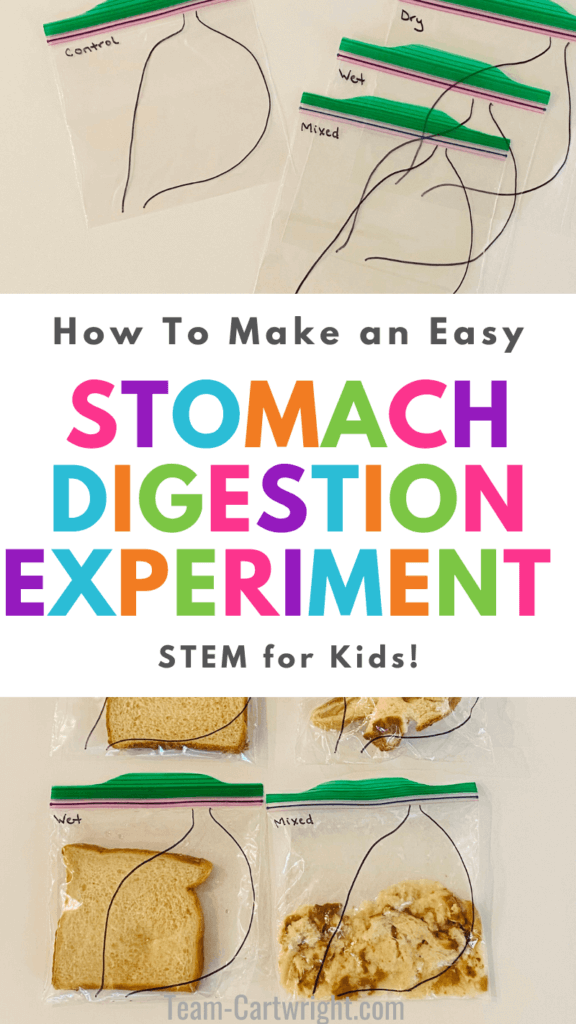
How Our Stomachs Digest Food
Our stomachs work a little differently than this experiment, in that we chew up our food before we digest it, but the main idea holds true.
When our food gets to our stomach it digests in two main ways, through stomach acids and through muscles actually contracting around our stomachs. (Yes, this is a simplified explanation. But it’s a good one for little ones.)
Rugae (Stomach Muscles)
Stomachs have ridges of muscles all around them called rugae, and these aid in digestion.
Your teeth break food down into smaller chunks, and your stomach muscles help move that food around to further break down.
In our experiment we used our hands to physically break down the food in our stomachs.
Stomach Juices
Our stomachs aren’t just dry sacks that use physical force to break down our food. There are also chemical reactions at play, made possible by different stomach juices.
Hydrochloric acid breaks down a lot of the food so we can digest it and get the nutrients we need. There are also digestive enzymes that have specific jobs like breaking down proteins.
In our experiment, we used water to represent the stomach juices. The water helps break down the bread even without having to physically manipulate the bags.
Our Results
When we used both methods, water and smooshing the bread, we had the most digestion take place. This is why our stomachs use both muscles and digestive juices to digest our food.
Try these next!
Scientific Method
This is an amazing activity to practice the scientific method. Even if your child doesn’t grow up to be a scientist, they learn so much from understanding this method. (Learn how here: Life Lessons from the Scientific Method)
- Question: Kids are naturals at this step, they are full of questions. What do they want to know about how we turn food into energy?
- Observe: Before we make a hypothesis, we observe. What does your child see from their bodies? And what do they see from their experimental setup?
- Hypothesis: A hypothesis is your best-educated guess at what is happening. Which bag does your child think will digest the bread best?
- Experiment: Run your experiment! This is where we test our hypothesis. Time for hands-on learning fun. Gather your data.
- Data Analysis: Look at your data. What do you see? This can include further observations from watching the experiment happen and numerical data, it just depends on the experiment.
- Conclusion: What conclusions can we draw from this? Which way digested the food the best?
Get Experimenting!
This is a great activity to start kids on real experiments. Encourage them to try again with different foods or different setups. Ask them what they observe? What do they think happens?
And get ready to watch your little scientist bloom and explore.

Let’s find your next fun activity!
Printable Instructions
Want to make this even easier? Print out the directions for easy reference!
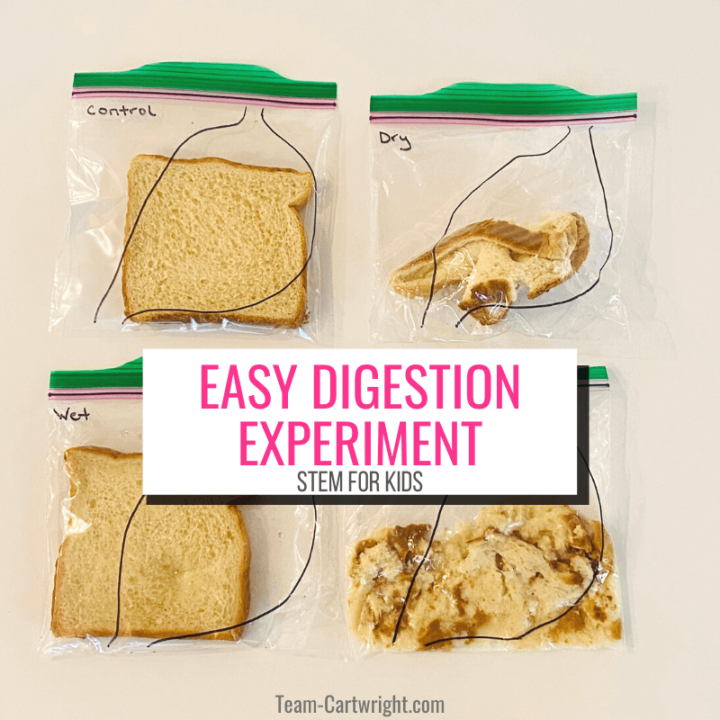
Stomach Digestions Experiment for Kids
Help your child learn how our stomachs digest food with a fun and easy experiment!
Materials
- 4 Resealable Baggies
- 4 Pieces of Bread
- Water
Tools
- Marker
Instructions
- Label your bags: Control, Dry, Wet, Mixed.
- Place a piece of bread in each baggie.
- Take the control bag and set it aside.
- Take the dry bag and squish up the bread in it for a few minutes, then set it aside.
- Next, take the wet bag and add 1/4 cup water to it. Gently swirl the bag around to coat the bread, but do not squish it. Set aside.
- Take the mixed bag and add 1/4 cup of water. Then squish the bread like with the dry bag.
- Observe and compare all 4 bags. Which bag broke down the bread the most?
Notes
Tips and Safety
This is a pretty safe experiment. It is always a good idea to have adult supervision when doing science though.
The key to this experiment is observation. Ask your child what do they see and feel in the bags. Have them touch the bread through the bag to compare the textures. What do they think happened here?

